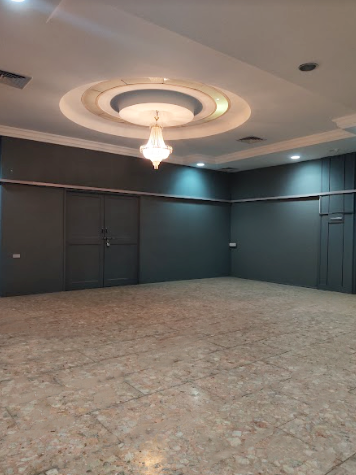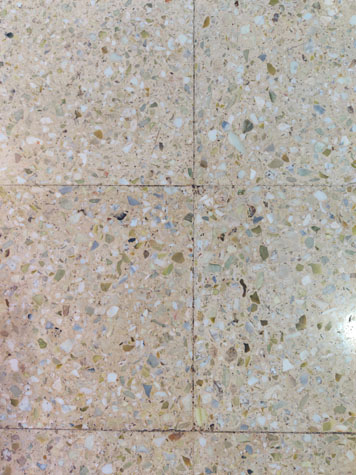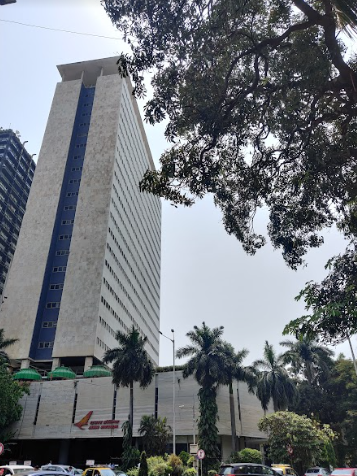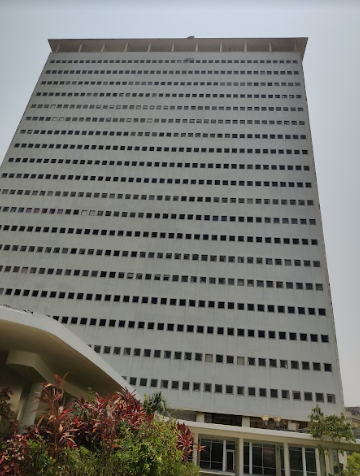100 Years
100 Stories

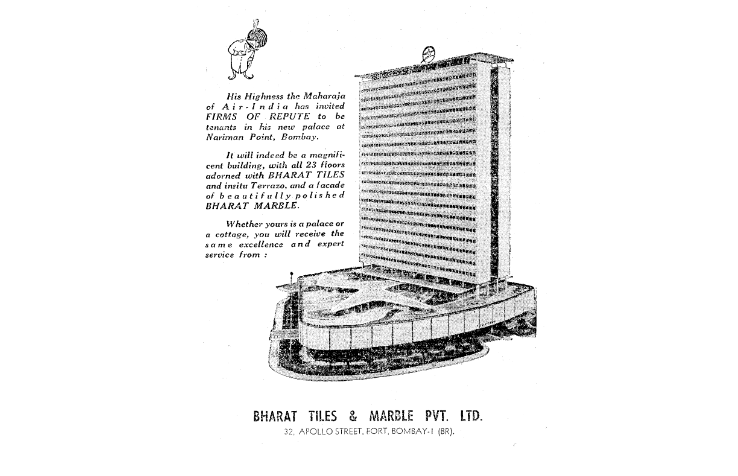
An advertisement of the work done by Bharat tiles in the Air India Building, BFT Archives
On 20th July 1965, a Times of India article announced, “ A skyscraper will soon come up on Bombay’s Nariman point, adding to the distinct look of the locality.” When the Air India building was commissioned in 1969, the country’s premiere carrier was undergoing a heady transformation. Having been founded in 1938, and emblazoned with its iconic moustached Maharaja, the airline was a symbol of glamour in its own right. This was the era when the journey of the ‘flying Indian’ was as much of an experience as the destination. When air hostesses dressed in shimmering silks handed out hot towels and boiled candy with a smile. When water for scotch was poured out from silver carafes for the first class jet setter. When caviar and foie gras was served at 30,000 feet…
The scale of operations and the route system of Air India had been steadily expanding after 1953, adding services to bustling metropolises across the world including Singapore, Sydney, Moscow, New York, Kuwait and Jakarta. The company expanded its fleet of carriers. In February 1960, Air India International inducted its first Boeing 707- 420, becoming the first Asian airline to enter the Jetliner Age, having aircrafts with more powerful engines, capable of achieving greater heights, quite literally!
Now more than ever, the Maharaja needed a new abode. The company started off by sending a team to the US in 1965 to study its skyscrapers, such as the Bell Telephone headquarters in America. Perhaps it was in New York that the services of John Burgee were enlisted to construct this building. Burgee, and his business partner Johnson, would go on to plan icons like the Roosevelt Island in New York City and the Niagara Falls Convention Centre. It was a building of many firsts. It had India’s first escalator, which is non operational today but stands as a silent sentinel to the building’s history. It was one of the first large scale fully air conditioned offices. With two levels of underground parking, six elevators, and 1,502 windows, it was a crowd puller for so many reasons. Not to mention its well maintained fire fighting capabilities, which once helped put out a blaze in a neighbouring building! The tower topped with its centaur logo stood as a beacon of the city, glowing red in the indigo Bombay sky.
Bharat Tiles and Marble added a feather to its own turban when it was selected to do all the flooring and the marble façade of the iconic Air India building. Once more the company played its role in nation building, adding to a clientele that included the Madras University and the Bombay Central Station and, down the road, the Sachivalaya building which was the seat of the Government of Maharashtra. The firm was proud to announce, “His Highness the Maharaja of Air India has invited firms of repute to be its tenants in his new palace at Nariman Point Bombay” All the 23 floors of the building were adorned by terrazzo work that was done in-situ and the façade was clad by Bharat in elegant marble of which not a slab has fallen in over 50 years. Bharat has executed a variety of schemes in the building. While some halls and corridors have pink terrazzo with white chips, others have cream terrazzo with mixed chips. The staircases were clad in marble, giving them an attractive sheen even today.
On the eastern and western facades, Bharat’s white marble wall cladding has given the building its trademark radiance, recognizable even from a distance. It is the pearl of what was once called the Queen's Necklace, the sweeping curve of Marine Drive that skirts the Arabian Sea.
The Air India building has been an attestation to India’s story of economic growth and success. The building has been an architectural marvel that has contributed in imagining India’s most modern and developed city as the city evolved from Bombay to Mumbai. In an article in the Hindu, former executive director, Air India, Jitendra Bhargava recalled that when the building opened in 1970, it became such an icon that security was needed to control the crowds. Crowds which inevitably came to admire the gleaming Bharat marble facade of the building and the reconstituted marble floors in pastel shades of pink and cream. Standing majestically as a climax to the Queen’s necklace, the soaring Air India building is truly a testimony to Bharat’s constant presence in Bombay’s architectural landscape, as it transformed from a city of palatial bungalows and mansions to one of soaring skyscrapers.
You may also like
-
 39My Home: L. H Hiranandani's Kanta BuildingDr. L.H Hiranandani’s family home, Kanta, had to have only the best tiles in town and it was obvious what would be the first choice.Read More
39My Home: L. H Hiranandani's Kanta BuildingDr. L.H Hiranandani’s family home, Kanta, had to have only the best tiles in town and it was obvious what would be the first choice.Read More -
 40Rustom Sidhwa: You Can’t Run A Business If You Can’t Run With ItBharat’s founder Rustom Sidhwa was an eclectic soul. Often found experimenting with cement mixtures on the weekends. Know more about the man who could solve any problem, sometimes with an ice cream, sometimes with a nugget of advice.Read More
40Rustom Sidhwa: You Can’t Run A Business If You Can’t Run With ItBharat’s founder Rustom Sidhwa was an eclectic soul. Often found experimenting with cement mixtures on the weekends. Know more about the man who could solve any problem, sometimes with an ice cream, sometimes with a nugget of advice.Read More -
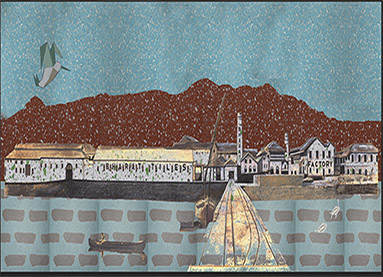 41"The Country's largest and most efficient power factory"The site of hundreds of creative experiments, installed with the top of the line equipment imported from faraway Europe. Bharat's Uran factory was where it all began.Read More
41"The Country's largest and most efficient power factory"The site of hundreds of creative experiments, installed with the top of the line equipment imported from faraway Europe. Bharat's Uran factory was where it all began.Read More


